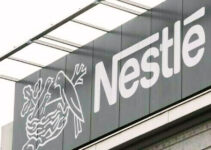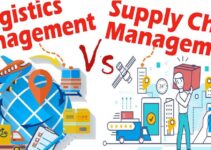Reverse logistics plays a key role in SCM processes and companies implement it to exhibit their operational efficiency and satisfy their end consumers. They invest time and resources in managing their reverse logistical activities and processes. Today, we’ll discuss the activities of reverse logistics; its definition; various types, and activities involved in the process of RL.
What is Reverse Logistics?
Before jumping into the activities of reverse logistics; it is significant to discuss its definition. Reverse logistics is one of the areas of supply chain management; it focuses on returning products and goods from customers back to the supply chain, retailer, suppliers, and manufacturer. However, reverse logistical is a great service, and customers return goods for various following reasons;
- Damaged or flawed product
- The product completed its life cycle
- Don’t need it anymore
- Want replacement
- Repair or maintenance
- Dispose
- Recycle
- Refurbishment
Types of Reverse Logistics
Some of the main types of reverse logistics are as follows;
Repair and Maintenance
As the name implies, many users want repair and maintenance services for their consumer electronics products like laptops or smartphones. They do so by invoking the warranty claim.
Rental Equipment
It means returning the leased or rental equipment or product at the end of the specified time period. Users send it back to the manufacturers for various reasons like redeployment, recycling, or disposal.
Delivery Failure
The delivery service providers return the products back to the fulfillment centers for the undelivered product; where they would ship it back to the manufacturer or producer. It is significant for efficient companies to deal with their delivery failure issues by correcting the problem and resending it.
End of Service Life
Users have to return some products and goods at the end of their lifecycle; so that the manufacturers can properly dispose of the product in an environmentally friendly manner.
Packaging Management
The packaging management process of companies would help them reuse packaging to decrease environmental waste and save costs. Otherwise, they would have to spend more expenses on the new packaging of returned products.
Return Policy & Procedure
It comprises of policy and protocol where you measure and analyze the customer returns. Employees and customers both have to follow such policies and procedures. It is a great strategic approach for companies to keep their policies and procedures transparent to the customers.
Unsold Products
It comprises returning products and goods from customers, fulfillment centers, and retailers back to the producer or manufacturer. The unsold product return process happens due to poor sales delivery refusal or some other factor.
Refurbishment & Remanufacturing
Refurbishment and reconditioning are those returns that would help the company avoid losses on defective products and goods; the company also finishes or reduces unnecessary waste.
Return Management
It is a very common form of reverse logistical process, and it focuses on dealing with regular customer-returned products. The objective of the company is to simplify the return process for better customer experience and improving brand image.
Activities of Reverse Logistics
Some of the main activities of reverse logistics are as follows;
Return Process
When customers or users ask for a return, the company starts the return process by invoking its return policy and procedures. Every company deals with returns differently and follows the standard return protocols. However, it discusses all the steps involved once the product leaves the hands of end consumers. Clearly outlining the return process helps companies decrease the environmental waste and pollution due to transportation.
Return Category
The company’s receiving personals should analyze the product and determine to put the product in what category. It should go to the resale, refurbishment, and recycling. It is significant that companies should streamline their reverse logistical processes to recognize the problem and categorize the product once it arrives. Proper categorization of the returned products helps the company to move the product accordingly.
Decreasing Waste
If the company continuously moves the returned products, then it decreases the amount of waste rather than the items that remain in one spot. Companies should move the repairing items quickly to the repairing and maintenance department; the same goes for resale and disposal. Once they reached the designated area, they would move on to their following process.
Repairing
The returned items that need repairing should quickly and timely move to the repairing department so that the repairing personnel can make end-of-life adjustments. If they could be repaired, then repair them and send them back to the company’s inventory. Otherwise, they would go to the disposing unit if they are irreparable items. For usable components, the company sends them back to the manufacturing unit for use in the production of other items.
Recycling
For some products and goods that you can’t fix, it is significant that you should dispose of them. Companies should be very careful while disposing and recycling of products; it means following environmental sustainability practices to avoid waste.
Conclusion: Activities of Reverse Logistics
After an in-depth study of the activities in reverse logistics; we have realized that the reverse logistical process plays a key role in the supply chain. If you are learning about the activities involved in the process of reverse logistics, then you should keep in mind the abovementioned types and processes.
Ahsan is an accomplished researcher and has a deep insight in worldly life affairs. He goes Live 3 days a week on various social media platforms. Other than research writing, he’s a very interesting person.


